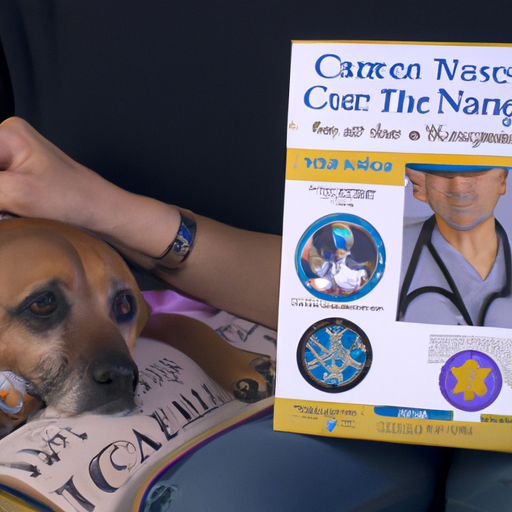Cancer – a word that strikes fear in the hearts of many. But when it comes to our furry companions, it doesn’t always have to be a death sentence.
Understanding Canine Cancer
You’ve heard the diagnosis: cancer. But what does this mean for your beloved dog?
Cancer, in simple terms, is the uncontrollable growth of cells. It can affect virtually any part of your pet’s body, often spreading to other areas through the blood or lymphatic system. While it can be a terrifying diagnosis, advancements in veterinary medicine mean that many types of canine cancer can be effectively treated, or at least managed to improve your dog’s quality of life.
Recognizing the Signs
Early detection is your best ally in fighting cancer. You, as a caregiver, are the frontline of defense. Here are some signs to look out for:
- Unusual lumps or swelling
- Sudden weight loss
- Loss of appetite
- Difficulty breathing or urinating
- Unexplained bleeding or discharge
Remember, these symptoms can also be signs of other health issues. It’s essential to consult with your veterinarian if you notice any changes in your dog’s behavior or appearance.
Treatment Options
There are several approaches to treating cancer in dogs. Your vet will recommend the most suitable treatment based on factors like the type, stage, and location of cancer, as well as your dog’s overall health. Here are some common treatments:
-
Surgery: This is often the first line of treatment for tumors that haven’t spread to other parts of the body.
-
Chemotherapy: This is used to treat cancers that have spread or are likely to spread. It can also be used in combination with surgery.
-
Radiation Therapy: This can be used to shrink tumors and relieve symptoms.
-
Immunotherapy: This new and exciting field of treatment uses the dog’s immune system to fight cancer cells.
| Treatment | Best For | Drawbacks |
|---|---|---|
| Surgery | Localized tumors | Invasive, may require lengthy recovery |
| Chemotherapy | Spread or likely to spread cancer | Can have side effects |
| Radiation | Shrinking tumors, relieving symptoms | Can cause discomfort |
| Immunotherapy | Newer, less understood cancers | Still experimental, may not be widely available |
Supporting Your Dog Through Cancer Treatment
Your role as a caregiver doesn’t end with a cancer diagnosis. There are many ways you can help your pet navigate this challenging time:
-
Maintain a healthy diet: Good nutrition is crucial for dogs undergoing cancer treatment. Your vet can help you devise a diet plan that supports your dog’s health.
-
Provide plenty of exercise: Regular activity can help keep your dog’s spirits up and combat the side effects of treatment.
-
Offer emotional support: Never underestimate the power of love and companionship. Your presence can provide significant comfort to your pet during this difficult time.
Frequently Asked Questions
Q: Can my dog live a normal life after a cancer diagnosis?
A: Many dogs can lead fulfilling lives after a cancer diagnosis. The key is early detection and appropriate treatment.
Q: Can canine cancer be prevented?
A: While there’s no surefire way to prevent cancer, maintaining a healthy lifestyle can reduce the risk. This includes regular vet check-ups, a balanced diet, and plenty of exercises.
Q: Is cancer in dogs the same as in humans?
A: Many types of cancer occur in both humans and dogs, and they can have similar symptoms and treatments. However, each case is unique and should be treated accordingly.
In conclusion, a cancer diagnosis is not the end of the road for your beloved pet. With early detection, appropriate treatment, and your loving care, many dogs can continue to live happy, fulfilling lives even after a cancer diagnosis.



